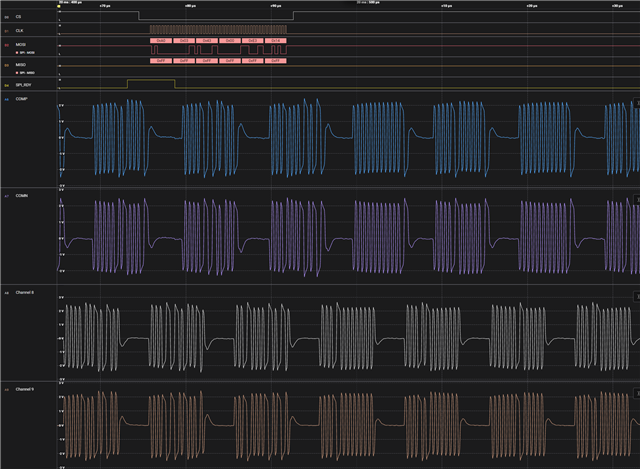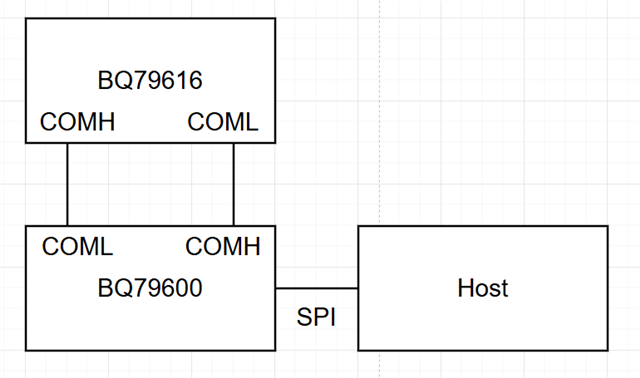Other Parts Discussed in Thread: BQ79616
Tool/software:
Hello,
We are working on a custom BQ79600+BQ79616 application with galvanically-isolated daisy chain. Below are some setup details:
- The daisy chain is set up as a two-device chain and we are setting the address 1 BQ79616 device as a stack device and as the stack top in the same SPI frame
- The daisy chain is connected as a ring architecture: BQ79600 COMH is connected to BQ79616 COML and BQ79616 COMH is connected to BQ79600 COML
- Wakeup seems to work fine as the BQ79616 AVDD, DVDD, NEG5V, etc. all come online
- We are able to read faults from address 0 on the daisy chain after attempting auto addressing
- Please find below the schematics for the BQ79616, BQ79600, and the daisy-chain circuits. The daisy-chain is repeated on both stack devices.
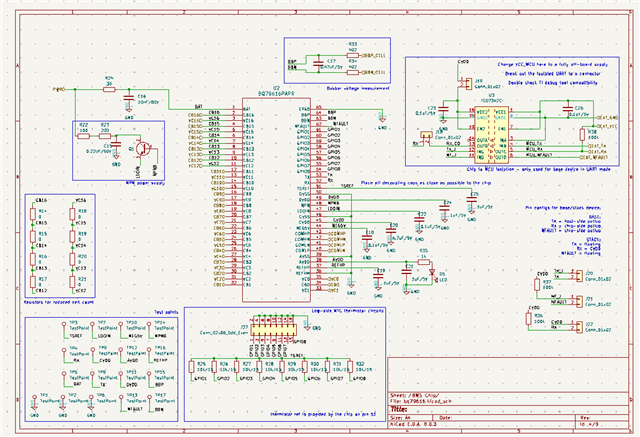
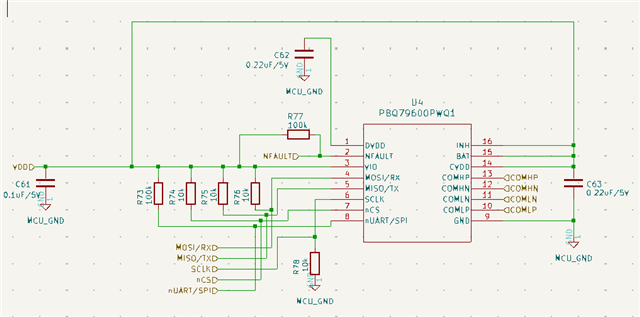
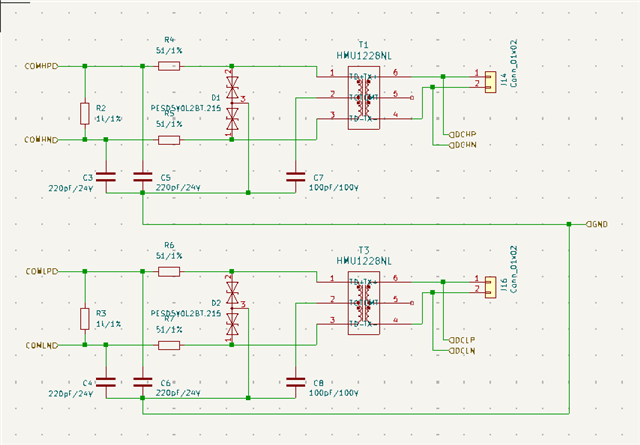
I'm attaching two .sal files with the following data transmissions:
- initial problem.sal - a wakeup + auto-addressing sequence where, as soon as we send the first dummy read command, the SPI_RDY pin just drops low and never re-asserts.
- faults and debug 2.sal - reading fault and debug registers from device 0
We would appreciate if you can point us in the right direction to debug this issue. Thanks!


